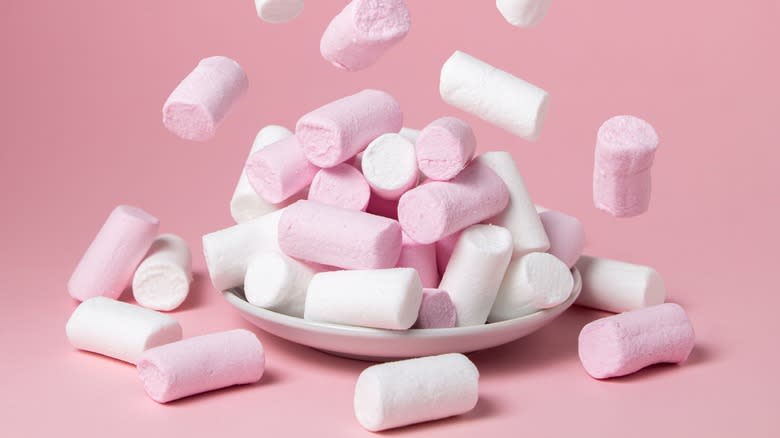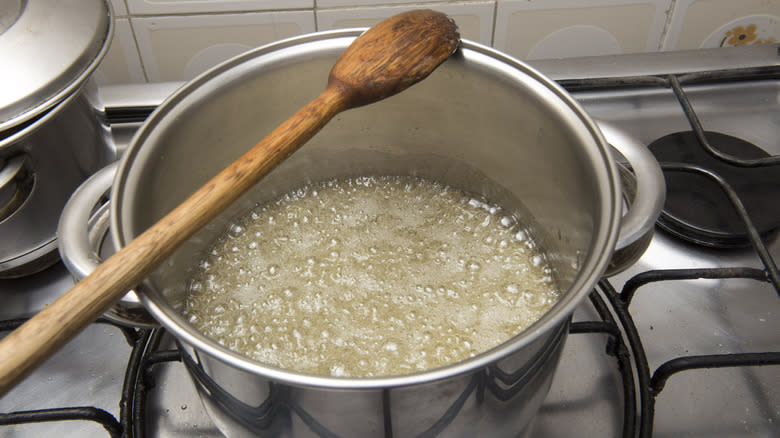Expert Advice On Melting Sugar For Perfect Homemade Marshmallows

We may receive a commission on purchases made from links.
Marshmallows are a fluffy delight rendered even better by the pride of making them at home. However, these s'mores staples require a steady hand and a good deal of patience if you want to get them right.
Luckily, we have a baking expert on hand to help. Mashed spoke to Jessie Sheehan, celebrated cookbook author, recipe developer, baker, and host of the No. 1 baking podcast in the U.S., "She's My Cherry Pie". Whether it's on her website, Instagram, or in her book, "Snackable Bakes: 100 Easy-Peasy Recipes for Exceptionally Scrumptious Sweets and Treats," Sheehan has dedicated her career to making home baking simple. On the topic of melting sugar for marshmallows, Sheehan's advice is to "make sure you do not stir the sugar mixture too vigorously or at all as you heat it to the firm ball stage."
By "firm ball stage," Sheehan is referring to a level of the cold water candy test, which measures how cooked sugar syrup is, based on how it interacts with cold water. When sugar is heated to between 245 and 250 degrees Fahrenheit, it reaches the firm ball stage. When syrup heated to this stage is dropped into cold water, it will form a ball that remains firm when removed from the water. However, if you give it a good squeeze it will flatten between your fingers.
Read more: 12 Popular Ice Cream Brands, Ranked Worst To Best
Why Shouldn't You Stir Sugar Syrup While Cooking?

It's vital to keep sugar syrup at a consistent temperature when cooking, as the difference between stages is as small as 5 degrees Fahrenheit, so be sure to avoid the mistake of making sugar syrup without a properly calibrated candy thermometer. Stirring speeds up convection, pulling the hottest liquid to the top where it can be cooled. This isn't a huge deal when it comes to a cup of coffee, for example, but the small temperature margins between liquid sugar stages mean even small changes can cause a reaction.
When you stir the mixture, you may end up reintroducing cooled sugar crystals that stick to the side of the pan into your syrup. This will induce a chain reaction in which liquid sugar will bind to the reintroduced crystals, resulting in a grainy texture. The perfect marshmallow is smooth, almost melting in the mouth, so graininess should be avoided at all costs.
Therefore, instead of stirring the syrup, Sheehan recommends "[swirling] the syrup by gently moving the pan with potholder-clad hands." Swirling will keep the sugar moving to ensure a smooth mixture, without dragging solid sugar crystals back into the pan.
Read the original article on Mashed.

